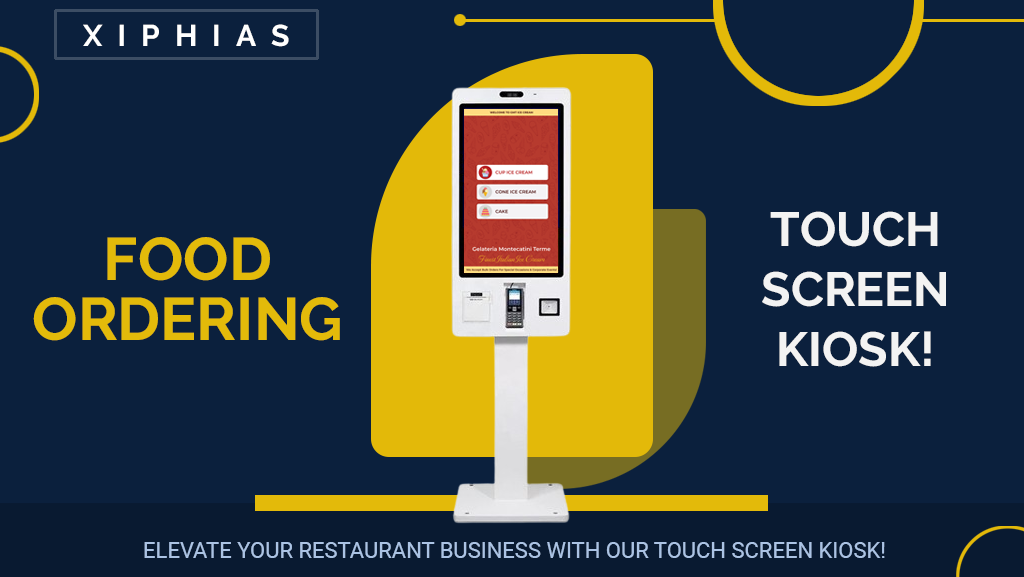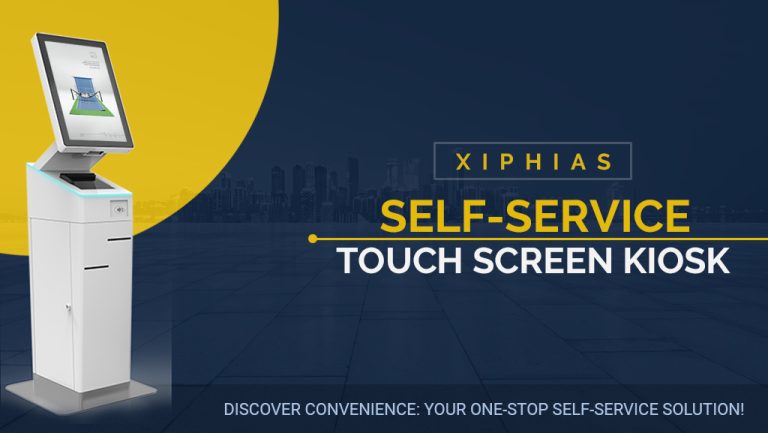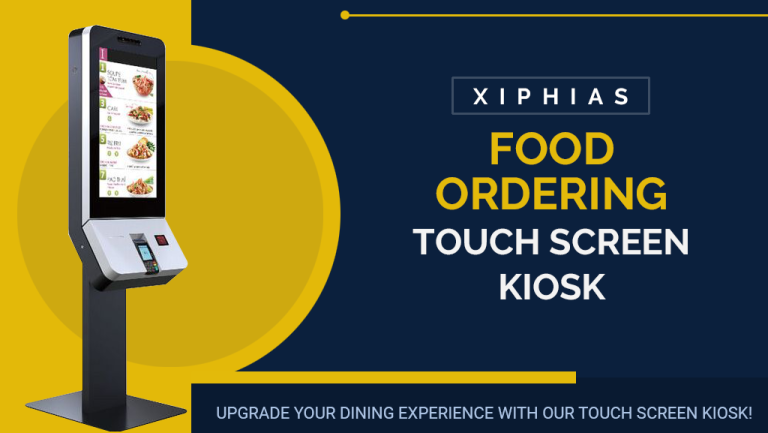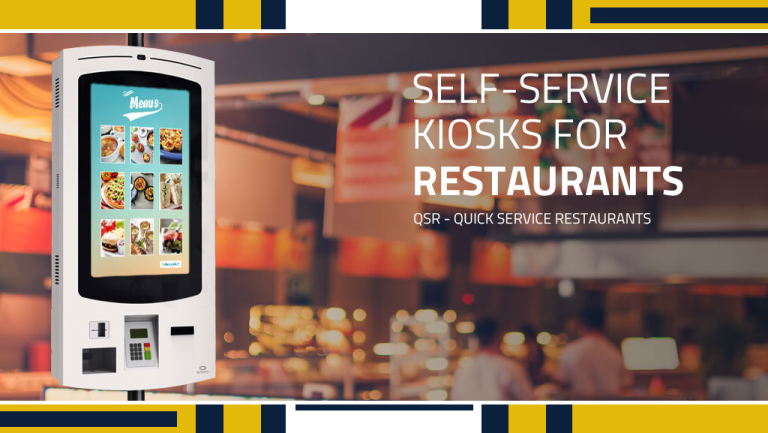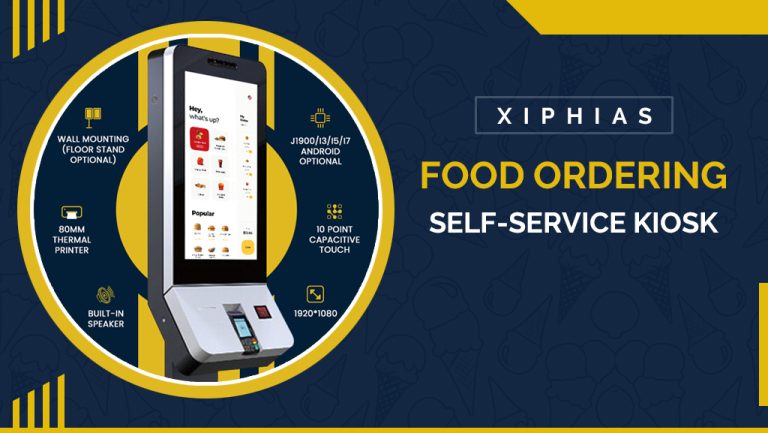Food Ordering Kiosks: A Game Changer for Efficiency and Customer Satisfaction
In the ever-evolving food industry, customer satisfaction and efficiency are crucial to success. Traditional ordering systems are time-consuming, often causing long lines and frustrated customers. Enter food ordering kiosks, a revolutionary technology changing how restaurants operate. These kiosks streamline the ordering process, boost efficiency, and enhance customer satisfaction. This blog will explore how food ordering kiosks are transforming the restaurant experience.
1. Reduced Wait Times Improve Customer Experience
Food ordering kiosks significantly reduce wait times in restaurants. Customers can place orders directly, bypassing long lines. Faster service leads to higher customer satisfaction, as time spent waiting decreases. Efficient ordering allows customers to enjoy their meals quicker, enhancing overall experiences.
Kiosks also allow customers to take control of the ordering process. This eliminates miscommunication between customers and cashiers, ensuring more accurate orders.
2. Increased Order Accuracy Reduces Mistakes
Traditional ordering systems often result in errors due to communication gaps. Food ordering kiosks eliminate these issues by enabling customers to place orders directly. This reduces human error and ensures more accurate orders. Customers can review their selections before finalizing, minimizing mistakes.
Order accuracy leads to greater satisfaction for both customers and staff. When orders are correct, restaurants avoid costly remakes and improve operational efficiency.
3. Enhanced Menu Customization
Kiosks offer customers more control over their orders. They can easily customize menu items, selecting specific preferences. From adjusting ingredients to choosing portion sizes, kiosks allow for personalized meals. This level of customization caters to individual tastes, improving overall satisfaction.
Menu customization also helps restaurants cater to dietary restrictions. Customers can easily indicate allergies or preferences, ensuring safer meal options.
4. Upselling Opportunities Drive Revenue Growth
Food ordering kiosks provide valuable upselling opportunities for restaurants. As customers navigate through the menu, kiosks suggest complementary items. This often leads to higher average order values and increased revenue. Upselling through kiosks is less intrusive than traditional methods, enhancing customer experience.
For example, kiosks might suggest adding a drink or dessert. Customers can easily add these items with a few taps, boosting sales without feeling pressured.
5. Streamlined Payment Process
Food ordering kiosks simplify the payment process, offering multiple options. Customers can pay using credit cards, mobile wallets, or even loyalty points. This variety improves convenience, reducing friction during checkout. Streamlined payments help move customers through the line faster, improving overall efficiency.
Additionally, kiosks allow customers to split payments or apply discounts easily. This flexibility enhances the customer experience, making transactions smoother.
6. Reduced Labor Costs
Implementing food ordering kiosks can help restaurants reduce labor costs. With kiosks handling the ordering process, fewer staff members are required at the counter. This allows restaurants to allocate employees to other areas, such as food preparation or customer service. Reduced labor costs contribute to overall operational savings.
By automating routine tasks, restaurants can focus on providing better customer service. Employees can dedicate more time to improving the dining experience rather than managing orders.
7. 24/7 Availability for Quick Service Restaurants
Food ordering kiosks are particularly beneficial for quick service restaurants (QSRs). These establishments often face high customer volumes and demand fast service. Kiosks provide round-the-clock ordering capabilities, ensuring seamless service. Restaurants can serve customers efficiently, even during peak hours or late-night operations.
The availability of kiosks enhances customer convenience. It allows customers to place orders whenever they want, further increasing satisfaction.
8. Integration with Loyalty Programs
Food ordering kiosks can integrate with restaurant loyalty programs. Customers can easily log in, track rewards, and redeem points during the ordering process. This promotes customer retention and encourages repeat business. Loyalty integration enhances the overall customer experience by providing incentives for future visits.
Kiosks also allow restaurants to gather valuable customer data. This data helps businesses refine marketing strategies and improve personalized offerings.
9. Improved Data Collection and Analytics
Food ordering kiosks provide restaurants with valuable data on customer preferences. This data allows restaurants to analyze ordering trends and make informed decisions. Insights into popular menu items or peak ordering times can help optimize operations. By understanding customer behavior, restaurants can tailor their offerings to meet demand.
Data from kiosks also aids in inventory management. Restaurants can better predict demand and avoid food waste, improving overall efficiency.
10. Enhanced Customer Privacy and Comfort
Some customers prefer not to interact directly with cashiers when placing orders. Food ordering kiosks provide a more private ordering experience. Customers can take their time to review the menu without feeling rushed. This leads to more comfortable dining experiences and greater customer satisfaction.
Additionally, kiosks offer customers the option to pay privately, enhancing security. Customers can avoid handing over payment details, reducing the risk of fraud.
11. Catering to Tech-Savvy Customers
Today’s customers are increasingly tech-savvy and expect digital solutions. Food ordering kiosks cater to this demand by providing a modern, interactive experience. Touchscreen technology is intuitive, making it easy for all customers to navigate. This seamless interaction aligns with customer expectations in the digital age.
Restaurants that implement kiosks appeal to a broader, tech-savvy audience. By adopting these technologies, businesses stay competitive in a fast-changing market.
12. Improved Efficiency for Restaurants
Food ordering kiosks improve efficiency in restaurant operations. Orders placed through kiosks are sent directly to the kitchen. This reduces the time spent processing orders, allowing staff to focus on food preparation. The streamlined process leads to quicker order fulfillment, improving overall productivity.
Faster service leads to increased customer turnover, especially during peak hours. Kiosks ensure customers receive their orders promptly, enhancing the dining experience.
13. Reduced Pressure on Staff During Peak Hours
Peak hours can be challenging for restaurant staff. High volumes of customers often lead to stress and slower service. Food ordering kiosks relieve pressure by automating the ordering process. This allows staff to concentrate on other tasks, reducing burnout and improving morale.
The reduced strain on employees contributes to better customer service. Staff members can focus on providing excellent table service, enhancing the overall atmosphere.
14. Greater Control for Customers
Food ordering kiosks give customers greater control over their dining experience. They can browse the menu at their own pace, select items, and customize orders. This freedom empowers customers to make informed choices, leading to higher satisfaction.
Providing customers with control fosters positive dining experiences. It reduces the frustration often associated with traditional ordering methods.
15. Adapting to Changing Consumer Preferences
The rise of self-service technology reflects changing consumer preferences. Customers today seek speed, convenience, and control over their dining experience. Food ordering kiosks align with these preferences, providing a fast and efficient ordering system. By adopting kiosks, restaurants stay ahead of evolving market trends.
This shift towards self-service enhances the dining experience for modern consumers. Restaurants that embrace these technologies benefit from increased customer loyalty and satisfaction.
Conclusion
Food ordering kiosks are transforming the restaurant industry by enhancing efficiency and customer satisfaction. They reduce wait times, increase order accuracy, and provide opportunities for upselling. The integration of loyalty programs and data analytics further drives business growth. By offering a more convenient, interactive, and customized experience, kiosks ensure customers leave satisfied. Restaurants that implement food ordering kiosks position themselves for success in a competitive market.

